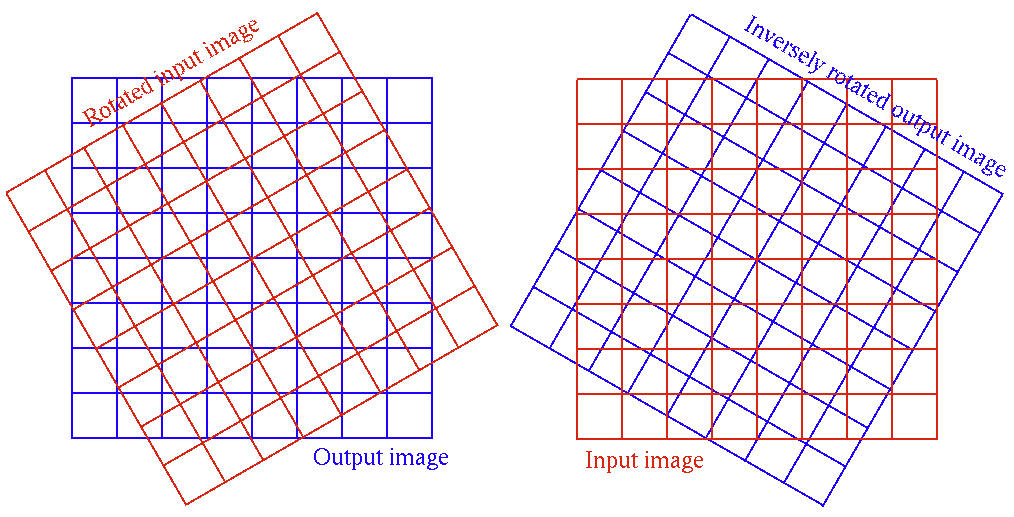Next: About this document ... Up: resize Previous: Arbitrary resizing
We first note that rotating the input image 






 |
(25) |
 of an image of size
of an image of size
 , then
, then
![$\displaystyle \left\{ \begin{array}{l}
p=[\;\;\;\cos\,\phi\; (k-x_0)+\sin\,\phi...
...+x_0 \\
q=[-\sin\,\phi\; (k-x_0)+\cos\,\phi\; (l-y_0)]+y_0
\end{array} \right.$](img63.svg) |
(26) |
![$x[p,q]$](img44.svg) for each
pixel
for each
pixel ![$y[k,l]$](img64.svg) of the output image using the same bilinear
interpolation method as in the arbitrary scaling discussed
above. Note that some pixels in the image after the rotation
may be outside the original image before the rotation, they
can be arbitrarily assigned with any color, such as black.
of the output image using the same bilinear
interpolation method as in the arbitrary scaling discussed
above. Note that some pixels in the image after the rotation
may be outside the original image before the rotation, they
can be arbitrarily assigned with any color, such as black.

